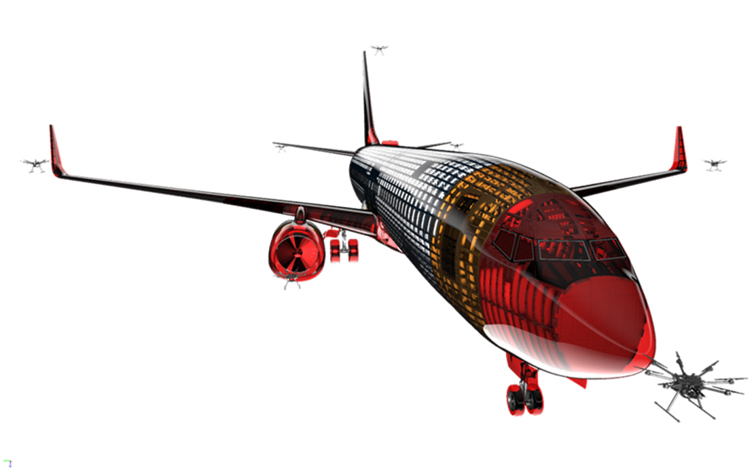Author: Maurits Rietveld, Editor Leonardo Times
Birdstrikes have already been an important topic in aviation’s safety for a long time. Considering the global rise of drones, collisions between drones and aircraft are starting to play a role in aviation safety as well. New studies have shed light on this issue.
A study carried out by the Federal Aviation Administration (FAA) showed that small drones are more damaging to planes than birds. Simulations reinforced by physical material tests were done on aircrafts colliding with drones, varying in weight from 1.2 to 3.6 kilograms. The wing’s leading edge, windshield and horizontal and vertical stabilizers were investigated as critical locations.
Results showed that the horizontal stabilizer suffered most of the damage and the cockpit’s windshield was least affected by the drone’s collision. Some of these simulations even showed the potential failure of the aircraft’s primary structure.
Drones being more damaging can be explained by its more rigid material opposed to the soft bird tissue. Especially the drone’s motor, payload and battery were a big factor in the amount of damage imposed. This stiffer material can penetrate the structure deeper, creating potentially more damage than a birdstrike. This is shown in the video below, which is a representation of one of the simulations.
Quadcopter leading edge impact, Credits: ASSURE
Another specific part of the investigation looked into the lithium batteries used in most drones. High impact speed of the collision shattered the lithium batteries, taking away the possibility of power shortage, which means no fire risk. Low impact speeds on the other hand, which mostly occur during landing and take-off, do not destroy the battery, posing threats of a fire hazard.
Currently, most of the aircraft manufacturers only take bird strikes into account, designing for birds of 3.7 kilograms on the fuselage and 1.8 kilograms on the windscreen. This research, however, showed drones are capable of endangering the structure of the plane. The researchers, therefore, concluded that certification regulations are not appropriate for unmanned vehicles.
Nevertheless, risks of collisions between drones and commercial airplanes are becoming higher. Sales of drones worldwide are still increasing. The FAA expects that 2.3 million drones will be sold in 2018 worldwide.
In many countries, drone regulations are already in effect. In the United States, drones can only be used outside a radius of five miles from the airport. In the Netherlands, specific no-fly zones for drones are applied around airports and don’t allow the drones anywhere to fly higher than 120 meters.

Only this October, a passenger plane in Canada with six passengers and two crew members was hit by a drone. Luckily the wing only experienced little damage, as a result, that the plane was able to land safely. This did happen outside the mentioned five-mile radius. However, the drone flew at a high-reaching altitude of 450 meters. Other close calls in drone collisions with planes are abundant, making it arguably that regulations alone are not sufficient.
To mitigate the chances of collision, the researchers stated that the drone’s manufactures should apply ‘detect and avoid’ or ‘geo-fencing’ systems to their drones. These systems make sure the drones automatically stop flying when in danger of collision, based on the near presence of aircraft or it’s GPS location.
In the future, plans to conduct more research in general aviation, turbofan engines and helicopters exist, to better understand the risks in mid-air collisions with UAV’s.
Sources:
